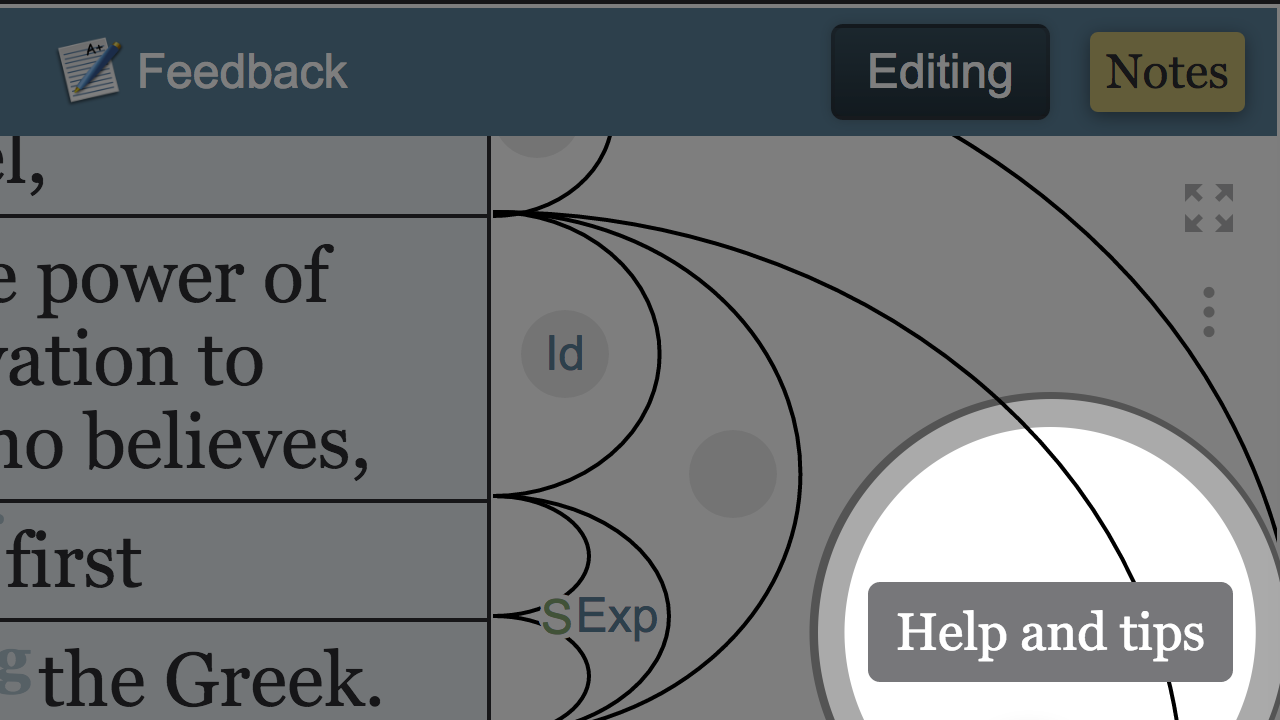Week 4 | Simeon's Blessing
Arcing: Learning the Logic of the Bible
What Is Arcing?
DEFINITION: Arcing is a tool used to discern, display, and discuss the flow of thought of a biblical text.
Discern: To understand what God is saying in his Word.
Display: To present it graphically so that, months later, when we return to our study, we can pick up where we left off.
Discuss: To talk about what we are seeing with others so that we can see more, and see better.
We do all this with special attention given to the flow of thought. That is, we study why the author said one thing after he said another, because this is key to understanding the text rightly.
Here are a few other ways to define Arcing:
Arcing is used to explain every proposition’s function within a paragraph.
Arcing is used to understand the logic of the text.
Arcing is used to let the flow of the text guide interpretation.
Arcing is used to determine the main point and see how it is supported.
How Do I Arc?
1. The first step is to break up the passage into propositions.
Remember from Lesson 1, a proposition is a verbal idea contributing to the flow of thought in the text. The general rule is that each verb, together with the words connected to it, make up a proposition.
2. The second step is to bring the text back together, noting the way the pieces connect to one another.
We call these connections logical relationships. By relating propositions to each other, we answer the question of how each piece contributes to the larger message of the text.
There are 18 of these logical relationships.
What Are the Logical Relationships of Arcing?

Coordinate Relationships
Notice the three categories of these relationships. The Coordinate logical relationships in Arcing are used to indicate the relationship between two or more propositions which each make their own independent contribution. That is to say, while the propositions will certainly relate to one another, neither is serving the other, neither is strengthening the other, neither is completing the other, neither is qualifying the other. In this category, each proposition is making a separate point.

Subordinate Relationships
The first subcategory of the Subordinate relationships is Support by Restatement. All the relationships in this category indicate that one of the two propositions is—in some fashion—pointing back to and telling us more about the other proposition. With Action-Manner, the manner is telling us more about the verb of the action. With Comparison, we learn more about one proposition by the other showing us what it is like. The negative proposition in Negative-Positive is clarifying the positive proposition by contrast, and the question proposition of a Question-Answer relationship is there to give us a context for the answer. Finally, Idea-Explanation is the catch-all, with the explanation proposition explaining something from the idea proposition.

The next subcategory of Subordinate relationships is Support by Distinct Statement. With each relationship in this category, we are presented with a new and distinct idea that is serving to convey a logical connection. You know you are dealing with a relationship in this category when you can identify two clearly different ideas at play, in which one is supporting, completing or qualifying the other.

The final subcategory of Subordinate relationships is Support by Contrary Statement. The relationships in this category could also fit the description of Support by Distinct Statement above, but are set apart since the distinct element is expressed in a very particular way. With these relationships, one proposition rubs against the other, and in this strange way supports the other. With Concessive, one proposition supports the other by expressing a contrary point whose acknowledgement reinforces the other proposition. Situation-Response is similar in the fact that the response is surprising or counter-intuitive—that is, contrary—to the situation.

For details about each of the 18 logical relationships, watch the following video.
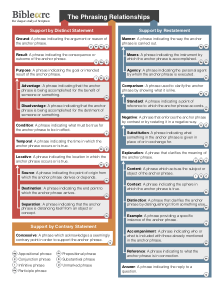 The 18 Logical Relationshipspdf
The 18 Logical RelationshipspdfThis printable cheat sheet gives the category and definition of the 18 logical relationships in Arcing. It also features common conjunctions and an example verse for each relationship.
How Do I Use the Discourse Module?
You are going to need to know how to use the Discourse module on Biblearc in order to build your arcs there. So let’s run through a quick tour.
Create a new module
Click the white + icon whenever you want to add a module. Then, after selecting Discourse, you will be able to choose a passage and text(s) for the new arc.
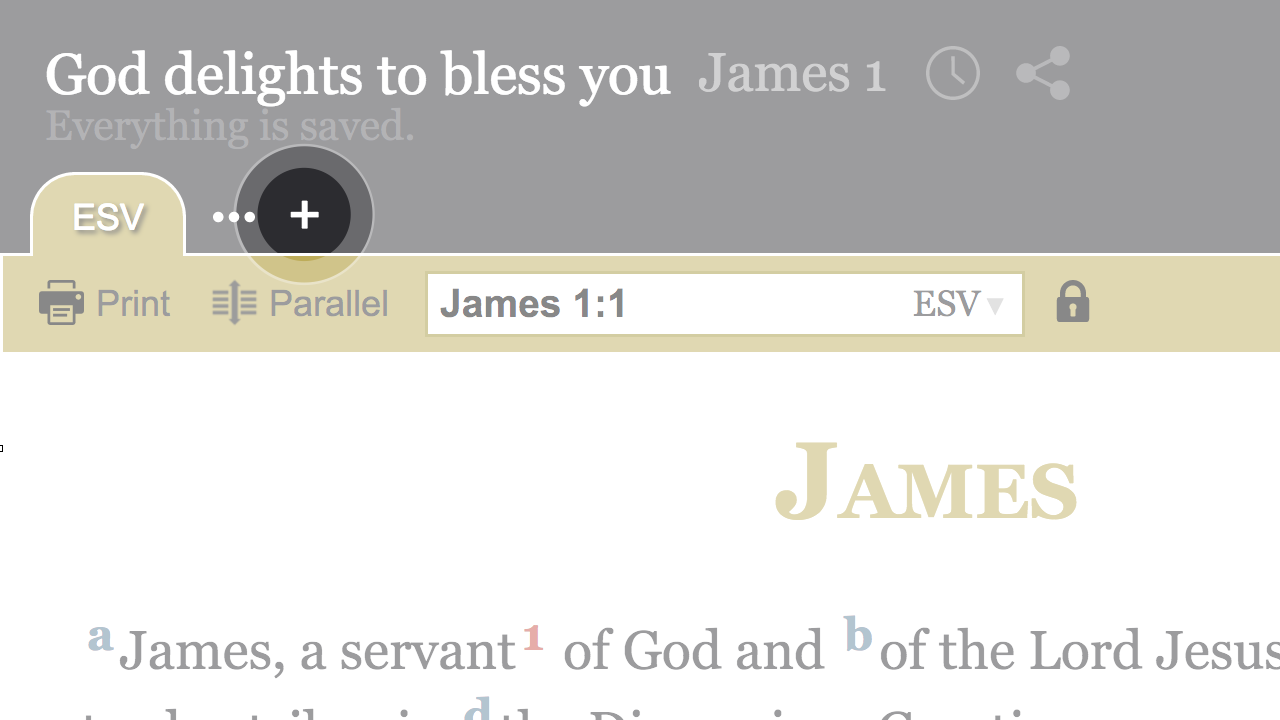
Understand editing mode
When you want to make changes to your arc, select the Editing button from the module's menu bar. You may also use the spacebar as a shortcut for toggling in and out of editing mode.

Adjust how Bible versions are displayed
Open the text and display options to add, remove and hide Bible versions. Use the column “handles” to adjust their size.
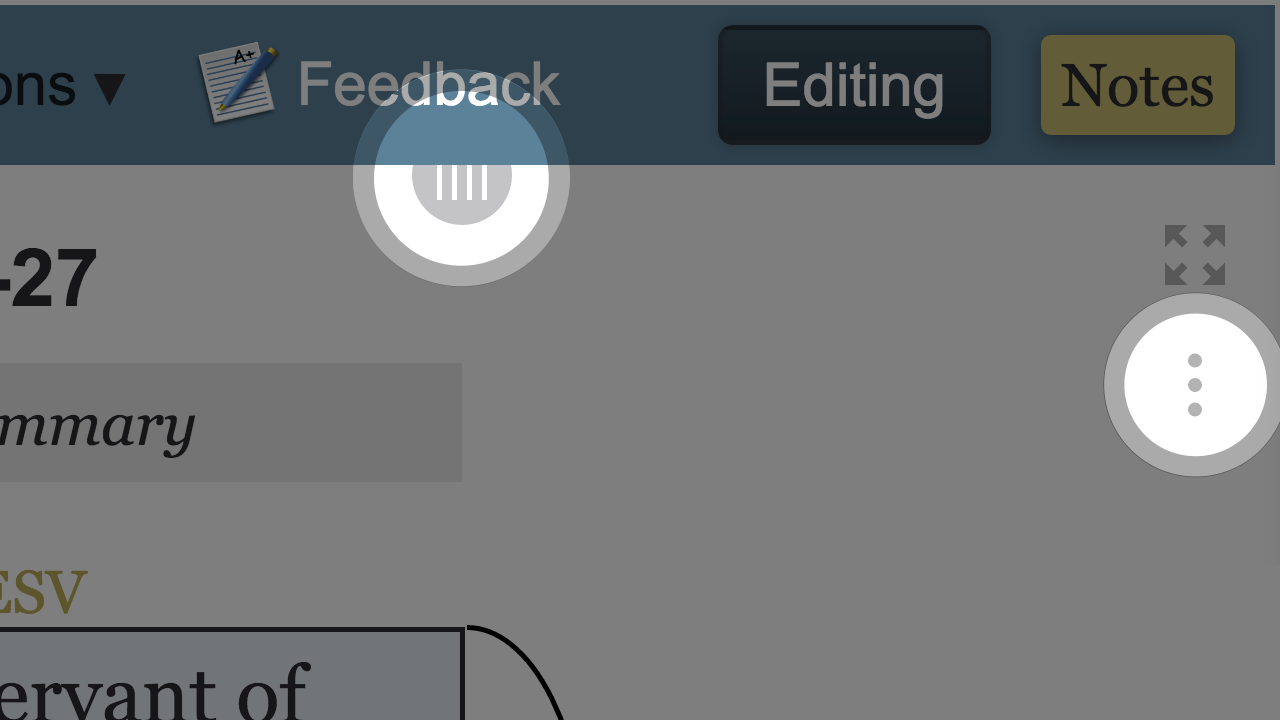
Split propositions
Click on a word to have it begin a new proposition. Click an X on the left to rejoin two propositions.
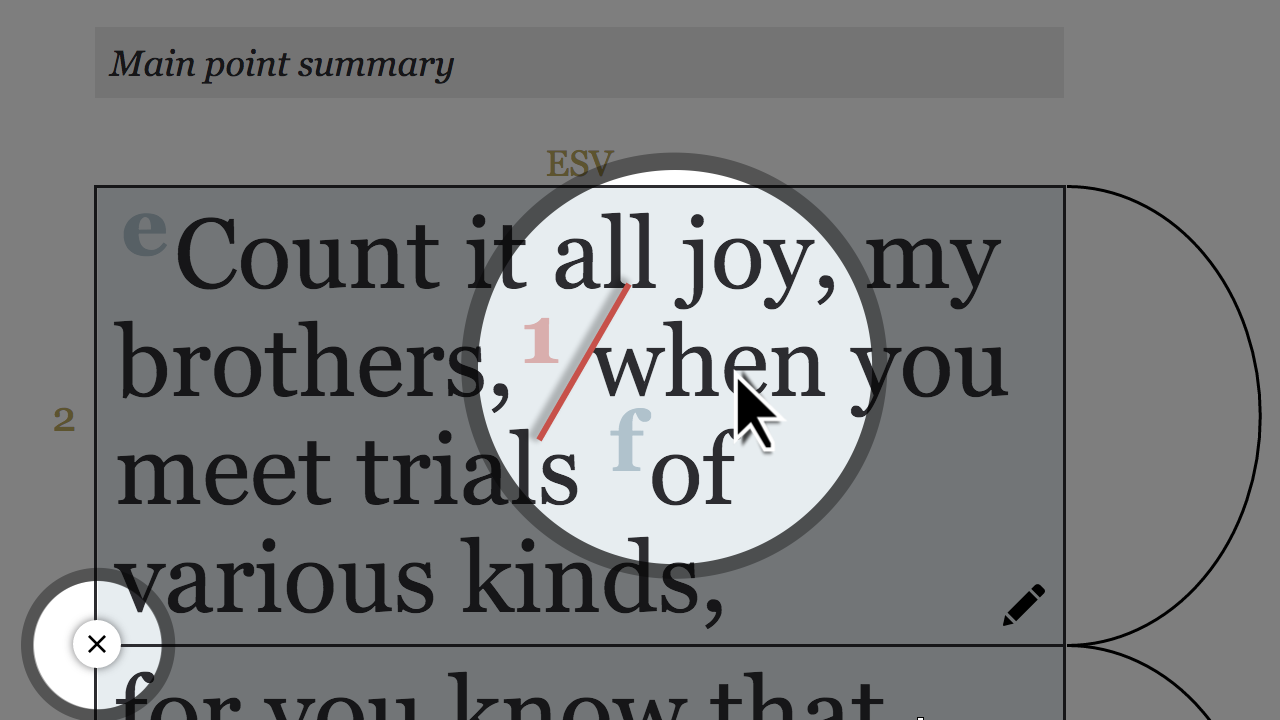
Draw arcs and indicate relationships
Click where you would like the arc to begin and end. Indicate a relationship by clicking an arc's “handle.” Click the double arrow to switch the order of a relationship.
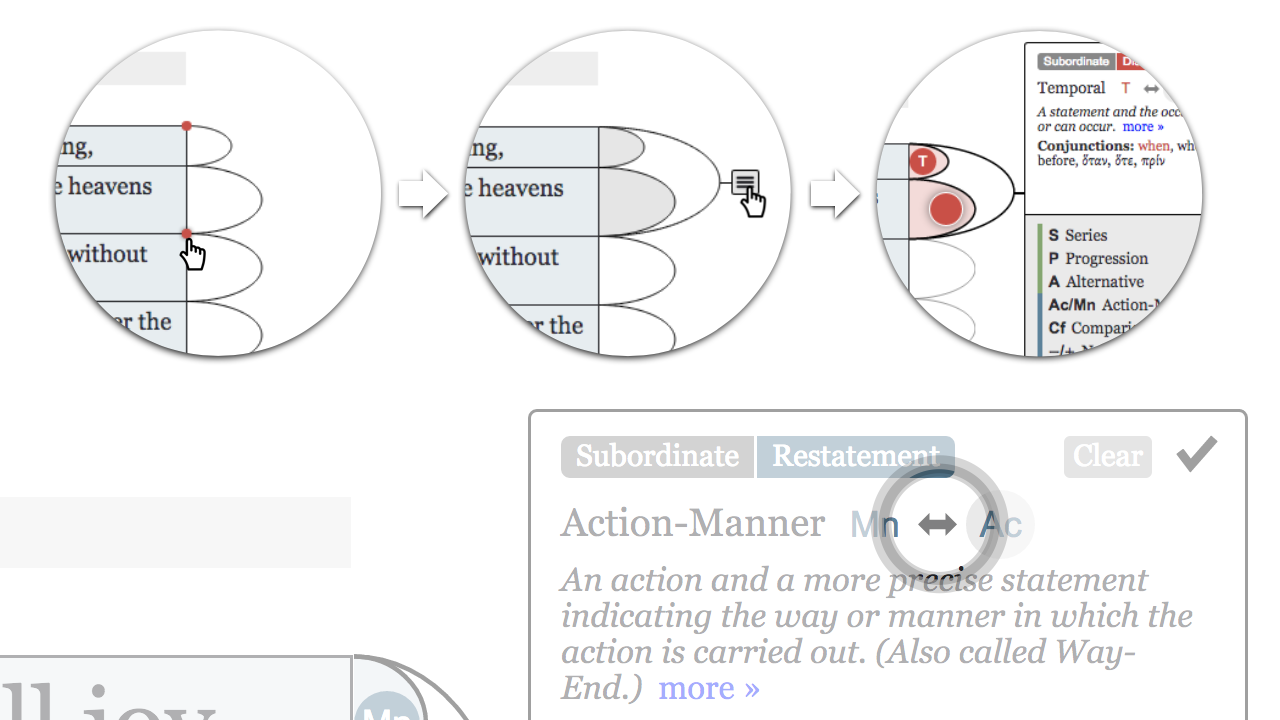
Know when you are done
You know you have indicated all necessary relationships when you have an arc over the entire passage and no “handles” appear when in editing mode.
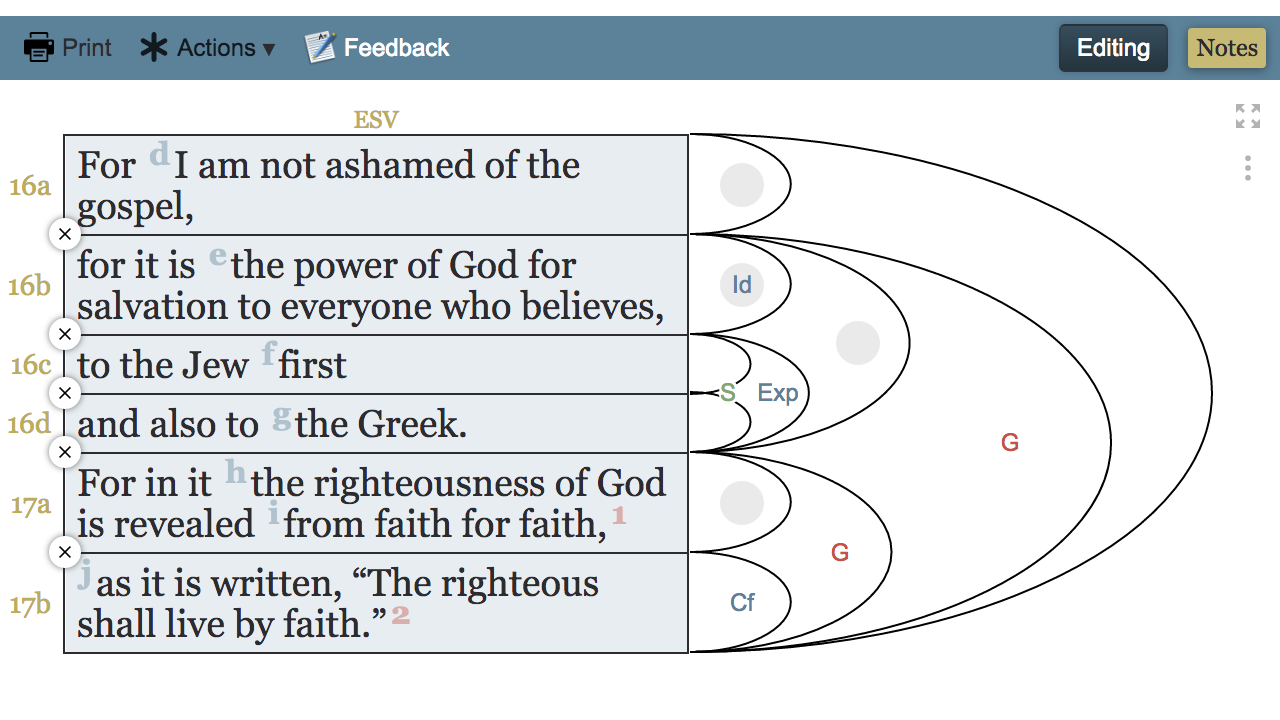
Use dot notes
Record insights and questions as you arc via the Notes button from the module menu bar.

Find more tips
Make use of the “Help and tips” button on the bottom right when in editing mode.
